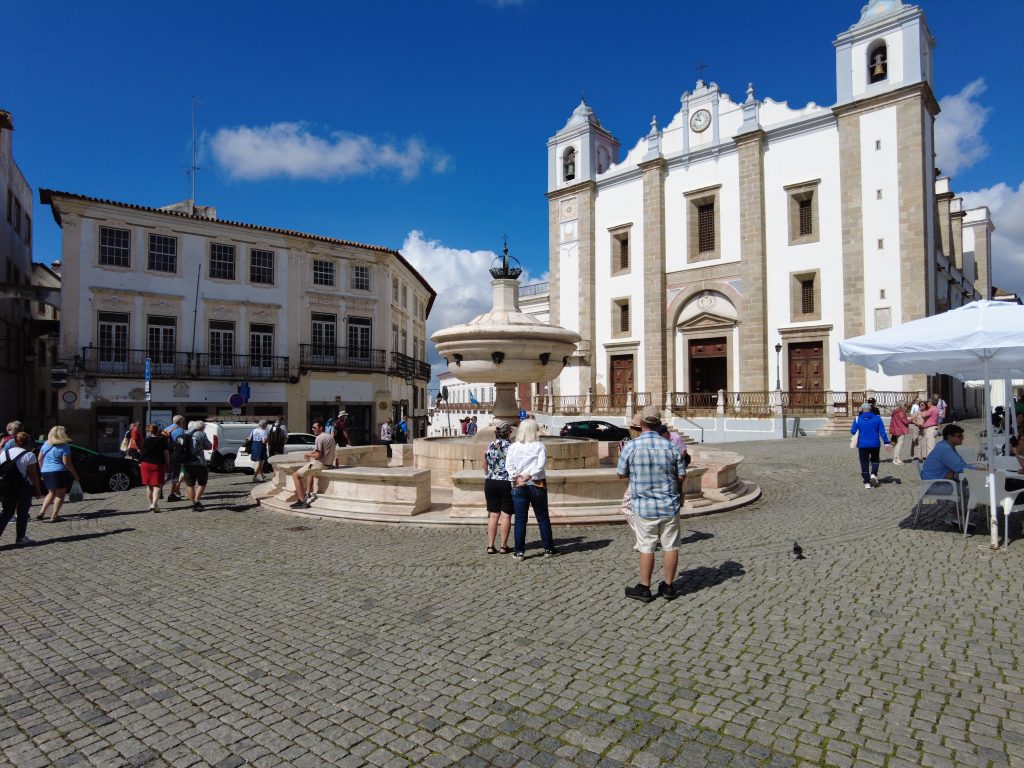If you’re in Lisbon and looking for an escape from the crowds or a new adventure when some monuments are closed, consider a day trip to one of Portugal’s UNESCO World Heritage Sites—Mafra. This charming village, just a short drive away, is home to stunning Baroque architecture, rich history, and beautiful natural surroundings that offer a perfect retreat from the bustling capital.
The Jewel of Mafra: The National Palace
Mafra’s crown jewel is undeniably the Mafra National Palace, a colossal Baroque masterpiece commissioned by King João V in the early 18th century. Originally built as a hunting lodge and monastery, the palace has become one of the grandest in Europe, showcasing an incredible mix of art, history, and architecture.
The palace’s grandeur is evident with its 1,200 rooms and the longest palatial corridor in Europe, stretching an astonishing 232 meters. But the highlights don’t stop there—the palace also boasts a breathtaking library, one of the most beautiful in Europe, with nearly 40,000 rare books. What makes it even more unique is its natural book preservation system—bats that help protect the volumes by eating harmful insects!
Another must-see is the palace’s magnificent basilica, which houses a remarkable collection of six pipe organs and the world’s largest carillon, featuring over 100 bells. If you visit on a Sunday afternoon, you might be lucky enough to catch a carillon recital that echoes through the village, creating a truly magical atmosphere.
Discover Jardim da Cerca: A Royal Garden Escape
Just beside the palace lies Jardim da Cerca, a charming garden that once served as the palace’s kitchen garden and orchard. It’s now a beautiful park where you can enjoy a relaxing stroll or have a quiet picnic. With its maze-like pathways, old water features, and serene shaded corners, Jardim da Cerca is the perfect spot to unwind after a day of exploring.
Nature’s Playground: Tapada de Mafra
If you crave more nature, head to the Tapada de Mafra, a sprawling 800-hectare park originally established as a royal hunting ground. Now a conservation and nature education site, it’s a haven for wildlife enthusiasts and families. You can explore the park by hiking, biking, or even taking a small train ride through the dense forests, spotting local animals like deer and wild boar along the way. It’s an ideal way to spend an afternoon, reconnecting with nature after absorbing all that royal history.
Wine, Food, and More—Exploring Beyond the Palace
Mafra offers more than just palatial grandeur. Here are some other activities to complete your day:
Wine Tasting at Quinta Sant’Ana
Just outside Mafra, Quinta Sant’Ana is a charming vineyard where you can enjoy wine tastings and picnics amidst scenic countryside views. It’s a perfect way to unwind and taste the local wines while soaking in the picturesque landscape.
Lunch at Adega do Convento
After your palace exploration, satisfy your appetite at Adega do Convento, a cozy restaurant known for its hearty Portuguese cuisine. It’s the perfect spot to experience authentic flavors and recharge for more adventures.
Hiking and Birdwatching in Tapada
Take advantage of the many trails within Tapada de Mafra, perfect for a leisurely hike or bike ride. Nature lovers will delight in the birdwatching opportunities, so don’t forget your binoculars!
Getting to Mafra: Your Travel Options
Mafra is just a short journey from Lisbon, and getting there is easy:
- By Car: Drive from Lisbon on the A8, merging onto the A21 near Venda do Pinheiro. Exit at Mafra East, where you’ll find free parking at the Alto da Vela Intermodal Parking.
- By Bus: Head to the Campo Grande Transport Hub (accessible via the Green or Yellow Metro lines) and take one of the Carris Metropolitana buses (routes 2740, 2742, 2802, 2803, or 2804) directly to Mafra.
Unfortunately, there’s no direct train to Mafra, as the station is too far from the town. But if you’re looking for an alternative travel experience, you can always join a guided tour with Desirable Portugal for a seamless visit.
Combine Your Visit with a Trip to Ericeira
Mafra is close to Ericeira, a picturesque fishing village that was recently awarded “World Tourism Village 2023.” Combining both destinations makes for a perfect day trip from Lisbon, giving you a taste of Portugal’s royal history and coastal beauty in one outing.
Why Mafra Should Be on Your Bucket List
Mafra may not have the bustling energy of a big city, but it offers a unique blend of history, nature, and traditional culture that makes it a must-see destination. Whether you’re a history buff eager to explore the magnificent Mafra Palace, a nature lover seeking the tranquility of Tapada de Mafra, or a foodie excited to sample local wines and cuisine, Mafra has something for everyone.
So, the next time you find yourself in Lisbon with a free day and a craving for a mix of royal elegance and rustic charm, don’t hesitate to make the short journey to Mafra. With its palatial beauty, natural wonders, and delicious local experiences, it’s a place you’re sure to fall in love with—just don’t forget to bring your camera to capture the stunning views!
For a sneak peek, check out a video of Mafra Palace shot on one of the busiest days—it’s a sight to behold! Watch it here. Enjoy your adventure in this charming corner of Portugal!
#Lisbon #Useful_Tips…

























